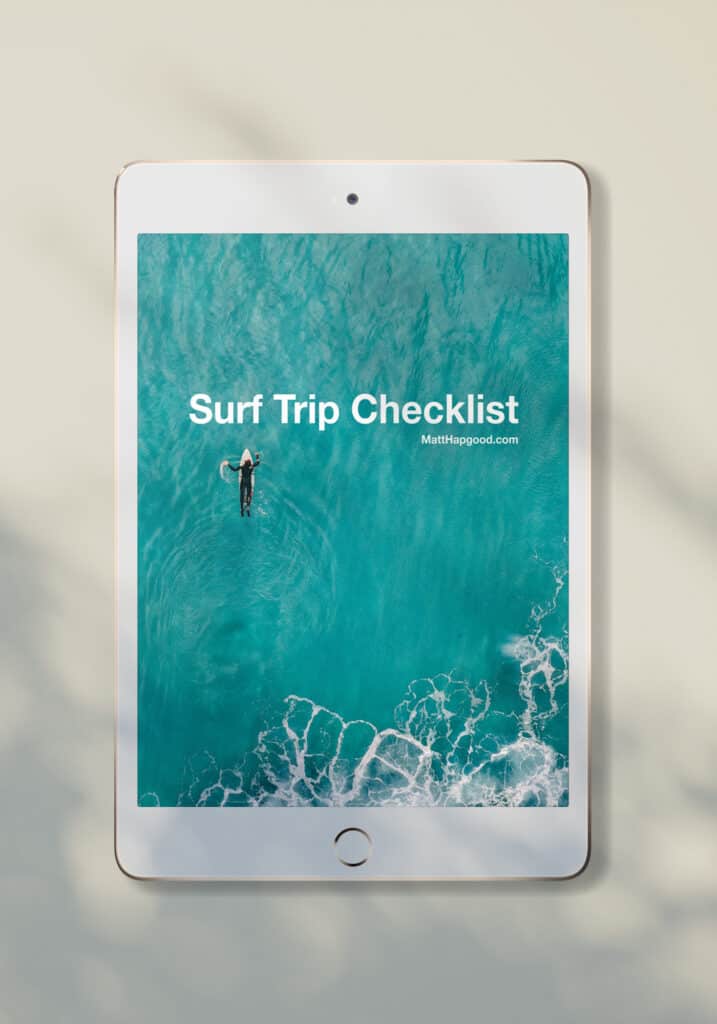Surf Board Rocker: A Beginner’s Guide
Last Updated on October 19, 2023 by Matt Hapgood
Surfing is all about flow, rhythm, and harnessing mother nature’s power in every wave.
But you can’t access a surfboard’s full potential without dialling in the ideal rocker.
Surfboard rocker is the subtle but vital curvature that runs along the length of your surfboard. But figuring out the right rocker for your ability, wave conditions, and performance can be sometimes confusing.
With so many variables about how different aspects of surfboard design affect overall performance, how do you know what’s best for you?
Get it wrong and you could end up with a board that feels slow, sticky, and hard to control.
In this beginner’s guide to surf board rocker, you’ll discover what surfboard rocker is, why it matters so much to your surfing experience.
Let’s rip in!
TL;DR (too long didn’t read)
Surfboard rocker is the curve from nose to tail. It affects manoeuvrability and speed.
Minimal rocker = flatter board, good for beginners.
High rocker = more curve, more suited for radical manoeuvres and ‘steeper’ waves.
What Does Surfboard Rocker Do?
Before we dive into the ideal rocker numbers, it helps to understand exactly what rocker does. In basic terms, rocker impacts how the board handles by changing the amount of curve from nose to tail.
But the effects of rocker are nuanced. Subtle differences in rocker profile and positioning make a world of difference in surfboard maneuverability, paddle speed, wave catching ability, and more.
To simplify it, there are two extremes. Boards with minimal rocker are flat, while high rocker boards have an exaggerated banana-like bend.
Both flat and high rocker boards have their pros and cons that make them suited to different conditions and surfing styles. Let’s take a quick look at how flat versus high rocker surfboards tend to handle:
Flat or Low Rocker Boards

Flat rocker boards, as the name suggests, have very little curve in their profile. This makes them faster paddlers and easier to gain momentum with each stroke.
The minimal rocker also increases speed down the line as less of the board is in contact with the water. Flat rocker boards are stable and consistent when planing across a wave’s face.
The entire rail length engages evenly for control. These traits make minimal rocker boards ideal for beginners learning to catch waves and surf straight lines. However, flat rocker boards lose maneuverability in steep or hollow waves.
Without curve to break free, they can catch rail and feel stuck in critical parts of a wave. Flat rocker also provides less responsiveness when setting up to carve.
High Rocker Boards

On the other end of the spectrum, high rocker boards have an exaggerated curve along their length. The banana-like bend lifts the rails and reduces the amount of board in contact with the water.
High rocker boards are extremely responsive and loose, making quick changes of direction and radical maneuvers much easier. The lifted rails help prevent catching edges when whipping through critical sections.
High rocker sacrifices paddle speed, but makes up for it with fast acceleration on steep drops. These boards come alive on hollow powerful waves, able to fit tight pockets and react instantly.
However, high rocker boards give up tracking and glide compared to flatter profiles. They require more work to generate speed and lack stability when planing across flatter sections.
Tail Rocker

Rocker doesn’t have to be uniform from nose to tail. Surfboard shapers often manipulate rocker specifically in the tail to fine tune performance. Increased tail rocker lifts the rails in the back third of the board to free it up for radical turns and boosts off the tail.
This allows the surfboard to pivot sharply off the back foot without catching the edge. More tail rocker also reduces drag for better drift, helping you stay in the power pocket.
Too much tail rocker however can make the board feel squirrelly, overly loose, and difficult to keep on line. There’s a sweet spot for tail rocker that varies based on your ability and wave conditions. Manipulating just the tail rocker is a great way to strike the right balance.
Nose Rocker

The nose rocker plays a critical role as well. Increased rocker towards the front of the board helps with paddle power, allowing an angled first stroke to generate speed.
The lifted nose also increases responsiveness on drop-ins, letting surfers pivot and set an early rail to start carving.
Nose rocker helps avoid pearling on steep waves and allows the board to plane earlier from rail to rail. Too much nose rocker can negatively impact glide, making the board feel twitchy.
Also, excess nose lift compromises stability during paddling and wave catching. Dialing in the right amount of nose rocker suits your ability to paddle and pop up, while still retaining good water flow across the deck.
To Sum Up
As a general rule just stick to these two simple principles:
- Small, weaker beginner types waves: Use a surfboard with low rocker
- Curved, powerful, steep waves: Ride a board with more rocker to ‘fit’ into the wave









